Do you know what is the key point of resin plug hole used in PCB making?
In recent years, the process of PCB resin plughole has been more and more widely used in PCB making industry, especially in some PCB products with high layers and large board thickness. People hope to use the resin plug hole to solve a series of problems that can not be solved by using a green oil plug hole or compression filling resin. However, due to the characteristics of the resin used in this process, many difficulties need to be overcome in the PCB production to achieve a good quality of resin plug products.
1 The origin of the resin plughole
1.1 The development of electronic chips
With the continuous update of electronic product technology, the structure and installation mode of the electronic chip is also constantly improving and changing. Its development is basically from the parts with plug-in feet to the highly intensive integrated circuit module with a ball matrix layout of solder joints. From the figure below, we can see the development process of parts:
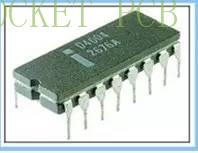
Earliest CPU
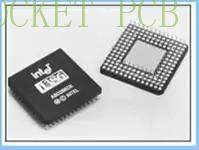
286cpu (plug-in pin)
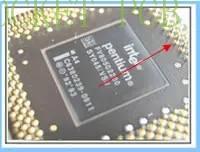
Pentium Series CPU (plug-in pin)
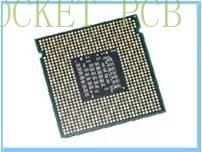
Ball array dual-core CPU
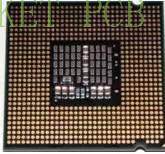
Server CPU
1.2 The meeting of two people made the resin plug hole technology
In the PCB industry, many PCB process methods have been widely used in the industry, and people have little concern about the origin of some process methods. In fact, as early as the electronic chip with ball matrix array was just put on the market, people have been making suggestions for this kind of small chip mount components, hoping to reduce the size of the finished product from the structure. In the 1990s, a Japanese company developed a resin to plug the hole directly, and then plated copper on the surface, mainly to solve the problem of bubbles in the hole which is easy to appear in the green oil plug hole. Intel applied this process to Intel electronic products, and the so-called POFV (part of the factory is also called via in PAD or VIPPO) process was born.
2 Application of resin plughole
At present, the PCB technology of the resin plug hole is mainly used in the following products
2.1 Resin plug hole of POFV PCB technology
2.1.1 Technical principle
A. Use resin to plug the through-hole, and then conduct copper plating on the hole surface.
As follows:


2.1.2 Advantages of pofv technology
Shrink the spacing between holes and reduce the area of the board; Solve the problems of wires and wiring, and improve the wiring density.
2.2 Inner HDI PCB resin plug hole
2.2.1 Technical principle
Use resin to plug the buried hole of inner HDI PCB, and then press it. This process balances the contradiction between the thickness control of the pressed dielectric layer and the design of the inner HDI PCB buried hole filling glue. If the HDI PCB buried hole in the inner layer is not filled with resin, the plate will explode during thermal shock and be scrapped directly; If the resin plug hole is not used, multiple PP sheets need to be pressed to meet the demand of filling glue, but in this way, the thickness of the dielectric layer between layers will be thicker due to the increase of PP sheets.
2.2.2 Example

2.2.3 Application of inner HDI PCB resin plug hole
Inner layer HDI PCB resin plug hole is widely used in HDI PCB products to meet the design requirements of the thin dielectric layer of HDI PCB products; for inner layer HDI PCB products with buried hole design, because the medium design combined in the middle is too thin, the process of inner layer HDI PCB resin plug hole often needs to be increased.
Part of blind hole products because the thickness of blind hole layer is greater than 0.5mm, the blind hole cannot be filled by lamination and filling glue, and resin plug hole is also needed to fill the blind hole, so as to avoid the problem of a copper-free blind hole in the subsequent process.
2.3 Through-hole resin plug hole
In some communication products, because the thickness of the board is more than 3.2mm, in order to improve the reliability of the product, or to improve the reliability problem caused by the green plug hole, the resin is also used to plug the through-hole with the permission of cost. This is a major product category that resin plug technology has been popularized in recent years.

3. Process and manufacturing method of the resin plug hole
3.1 Production process
The three types of resin plug hole described above have different processes, as follows:
3.1.1 POFV type products (different equipment in different factories and different process)
(1) Material opening →drilling →pth / electroplating →plug hole →baking →grinding →pth / electroplating →outer circuit →soldermask→surface treatment →forming →electrical measurement →FQC →shipment
(2) Cutting → drilling → copper deposition→pattern plated → plate (thickened copper) → resin plug hole → grinding → drilling through hole → copper deposition → pattern plated → outer layer pattern →electroplating → etching →soldermask→ surface treatment →routing→ electrical measurement → FQC → shipment
3.1.2 inner HDI PCB resin plug hole type products (two processes: grinding and non-grinding)
Grinding process:
(1) Cutting →buried hole inner layer figure → AOI → lamination → drilling → PTH / electroplating → plug hole → baking → grinding → inner layer circuit → browning → lamination → drilling (laser drilling / mechanical drilling) → PTH / electroplating → outer layer circuit →soldermask→ surface treatment → forming → electrical measurement → FQC → delivery
(2) Cutting → buried hole inner layer figure → AOI → lamination → drilling → copper deposition→pattern plated → plate (thickened copper) → resin plug hole → grinding → inner layer figure → AOI → lamination → drilling through hole → copper deposition→ pattern plated → outer layer figure → graphic electroplating → etching → soldermask→ surface treatment →routing→ electrical measurement → FQC → shipping
No need to grind: cutting → buried inner layer figure → AOI → lamination → drilling → PTH / electroplating → inner layer circuit → browning → plug hole → flattening → baking → lamination → drilling (laser drilling / mechanical drilling) → PTH / electroplating → outer layer circuit → soldermask → surface treatment →routing→ electrical measurement → FQC → shipping
3.1.3 outer layer through hole resin plug hole type
(1) Cutting → drilling → PTH / electroplating → plug hole → baking → grinding → baking → outer line →soldermask→ surface treatment →routing→ electrical measurement → FQC → shipping)
(2) Cutting → drilling → copper deposition → pattern plated→ plate (thickened copper) → resin plug hole → baking → grinding → baking → outer figure → figure electroplating → etching → soldermask → surface treatment → routing → electrical measurement → FQC → shipping!
3.2 Special place in PCB process
From the above process, we found that the process is different obviously. Generally speaking, we understand that "resin plug hole" is followed by "drill through-hole and copper deposition, pattern plated " process products, which we all think are pofv products;
If "resin plug hole" is followed by "inner layer figure", then we think it is inner layer HDI PCB resin plug hole products;
If the "resin plug hole" is followed by the "outer layer figure", then it is common.
The different kinds of products of resin plug and above are strictly defined in the process and cannot go through the wrong process, Rocket PCB develops three different inks according to the characteristics of the above three processes, tp-2900s \ tp-2900 \ tp-2900c these three inks correspond to the above three processes.
3.3 Process improvement
(1) For products with a resin plug hole, in order to improve the quality of products, people are constantly adjusting the process to simplify the PCB production process and improve the yield.
(2) Especially for the inner HDI PCB plug hole products, in order to reduce the scrap rate of the inner line open circuit after grinding, people use the process of pattern plating and then plug hole to make, first complete the inner circuit production, resin plug hole and then pre-cure the resin, and then use the high temperature in the compression stage to cure the resin.
(3) In the beginning, for the inner HDI PCB plug hole, people used UV pre-curing + thermosetting ink, at present, the thermosetting resin is directly used, which effectively improves the thermal performance of the inner HDI PCB plug hole.
3.4 Process method of resin plughole
3.4.1 Ink used for resin plughole
There are many kinds of ink used in a resin plug hole process on the market at present. Commonly used brands are those of suppliers such as San EI and Kotti.
3.4.2 The technological condition of the resin plug hole
(1) The hole movement of the resin plug hole is more than ten thousand, and it should be ensured that there is not one hole not full. This one-thousandth of defects will lead to the possibility of scrap, which inevitably requires rigorous thinking and specification in the process.
(2) Good plug hole equipment is an inevitable requirement. At present, there are two kinds of screen printing machines used in the resin plug hole, namely the vacuum plug hole machine, and the non-vacuum plug hole machine.
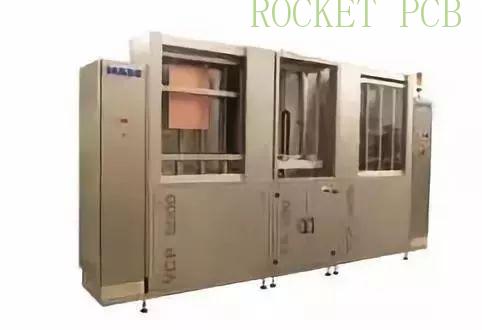
Vacuum screen printing machine
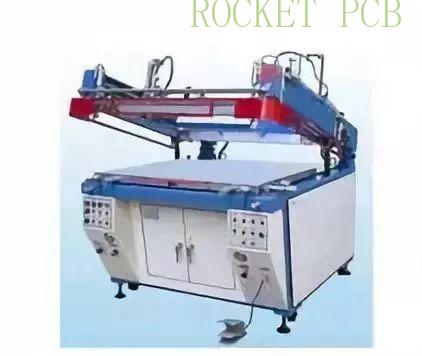
Ordinary screen printing machine
3.4.3 Plug hole process of common screen printing machine
(1) The selection of the screen printing machine mainly considers the maximum cylinder pressure, lifting mode, stability, and levelness of tool holder.
(2) The scraper for silk screen printing needs to use a scraper with 2cm thickness and 70-80 degree hardness. Of course, it must have the characteristics of strong acid and alkali resistance.
(3) The screen plate for silk screen printing can be screen or aluminum plate; the control is to select the appropriate screen mesh number and the window size for the hole diameter according to the requirements of the plughole process conditions;
(4) There are many kinds of base plates for the resin plug hole, but they are often ignored by the engineer. The backing board not only plays the role of air guide but also plays the role of support. For the area with dense holes, after we drill the base plate, the whole area is empty. At this position, the base plate is arched or deformed, and the support force for the plate is the worst, which will result in poor fullness of the plughole at this position. So when making the base plate, the best way to overcome the problem of large area vacancy is to use a 2mm thick base plate and only drill 2 / 3 of the depth of the base plate.
(5) In the printing process, the most important thing is to control the printing pressure and speed, generally speaking, the larger the aspect ratio, the smaller the aperture of the plate, the slower the required speed, the greater the pressure requirements. The control of slower speed is the best for the improvement of plug bubble.
3.4.4 The plug technology of vacuum resin plug machine
Due to the high price of vacuum resin plug machine and the confidentiality of its equipment use and maintenance technology, there are only a few PCB manufacturers that can use this technology at present. vacuum resin plug hole machine plug hole technology is mainly that it has an ink clamp and two plug control heads which can move horizontally, and there are many small holes in the plug hole head. After the equipment is vacuumized, use the piston to push the ink in the ink clamp to the small hole in the plug hole head. The two transverse plug hole heads first clamp the board and then fill the ink into the through-hole or blind hole on the board through many small holes in the plug hole head. The plate is vertically hung in the vacuum chamber, and the transverse plug hole head can move downward until the hole in the plate is filled with resin. The pressure of the plug hole head and ink can be adjusted to meet the requirements of plug hole fullness. Plughole heads of different sizes can be used to plug holes for different board sizes. After the plug hole is completed, it can be scraped off with the scraper pulp plug hole ink and added into the plug hole ink clip for reuse.
At present, there is still a kind of vacuum plug machine which is printed with the help of silkscreen and uses a CCD alignment system. Its operation is similar to that of ordinary silk screen printing, but there is an additional vacuum plug hole process. The effect of this kind of plug machine is the best, but because of the expensive equipment investment, it has not been widely used.
Using a vacuum plug machine is undoubtedly the best way to solve the problem of resin bubbles, and the selection of plug ink will not be limited by the process basically. But because the whole board has resin, it is very difficult to remove the resin. It needs to be used together with a good grinder.
Nonwoven plate grinder or abrasive belt grinder is essential equipment for making resin plug holes. On the one hand, the equipment is required to be able to effectively remove the resin from the plate surface, on the other hand, the roughness of the copper surface is required to be free of scratches and other problems.
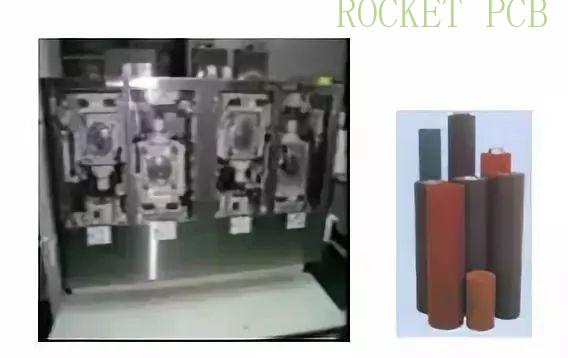
Nonwoven grinder
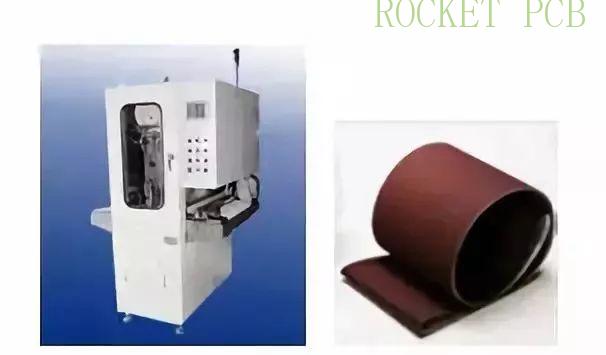
Belt grinder
4 Common quality problems of 4 resin plug hole and improvement methods
For pofv products
4.1.1 FAQ
(1) Orifice Bubble
(2) Plug hole is not full
(3) Resin and copper layer

4.1.2 Consequences
(1) There is no way to make a pad on the orifice; the gas reservoir at the orifice, chip mounted blowing, also known as out gassing
(2) No copper in the hole
(3) The solder pad protrudes, which causes the component or component to fall off

4.1.3 Preventive and improvement measures
(1) Select appropriate plug ink, control the storage conditions and shelf life of the ink.
(2) Standard inspection process, to avoid the appearance of cavity at the chip position orifice. Even if we can rely on the excellent plug hole technology and good screen printing conditions to improve the yield of the plug hole, but the probability of one in ten thousand can also lead to product scrap, sometimes it’s a pity that there is no pad on the hole just because of a hole cavity. This can only be checked to find out the location of the cavity and repair the action. Of course, the problem of checking the voids of resin plug holes has always been discussed, but there seems to be no good equipment to solve this problem. However, there are many different ways to improve the accuracy of manual inspection.
(3) Select the right resin, especially the choice of material TG and expansion coefficient, the right production process and the right degumming parameters, in order to avoid the separation of the pad and resin after heating.
(4)) For the problem of resin and copper delamination, we found that the problem of resin and copper delamination can be greatly improved when the thickness of copper on the hole surface is greater than 15um.(as shown below)

4.2 Inner layer HDI PCB buried hole, blind hole plug resin plug hole
4.2.1 Common problems
(1) Bursting plate
(2) Blind hole resin protrusion.
(3) No copper in hole

4.2.2 Consequences
Needless to say, the above problems directly lead to product scrap. The protrusion of resin often causes the circuit to be uneven and leads to the open short circuit problem.
4.2.3 Preventive and improvement measures
(1) Controlling the fullness of the inner HDI PCB plug hole is a necessary condition to prevent the bursting of the board; if the plug hole is selected after the circuit, the time from the plug hole to the lamination and the cleanness of the board surface should be controlled.
(2) The protuberance control of the resin needs to control the grinding and flattening of the resin.
4.3 For the plug hole of the through hole, there are relatively few problems, so no special discussion is made here.
5 Promotion of resin plug technology
With the improvement of the application proficiency of the resin plug technology and the effective solution of stubborn problems such as bubbles, the resin plug technology is constantly promoted. For example, the HDI PCB blind hole is filled with resin plug, and the inner HDI PCB buried hole VIP process of laminated HDI PCB structure, etc.;

At present, in the industry standard (IPC-650), it seems that there is no requirement for the copper thickness on the hole of the resin plug. The potential risk is that once the copper plating on the hole of the resin plug is thin, after the surface treatment of inner HDI PCB line and browning treatment, the thin copper on the hole can be drilled through by laser drilling, and there is no requirement in the electrical test. If there is a problem with it. But the quality of this thin layer of copper in terms of high-pressure resistance is really worrying.

According to our experimental data, if we can ensure that the copper thickness above the buried hole is greater than 15um, and meet the requirements of hoz for copper thickness, generally there will be no quality abnormality. Of course, if the customer has higher communication requirements, it is another matter.
6 Conclusion
After years of development, the technology of the resin plug hole has been gradually accepted by many users and has played an indispensable role in some high-end PCB products. Especially in a blind hole, HDI PCB, thick copper, and other PCB products have been widely used, these products involve communication, military, aviation, power, network, and other industries. As the manufacturer of PCB products, we have understood the process characteristics and application methods of resin plug hole technology. We also need to continuously improve the processability of resin plug hole products, improve the quality of products, solve the related process problems of such products, really use and promote such technology, and achieve the production of PCB products with higher technical difficulties.





